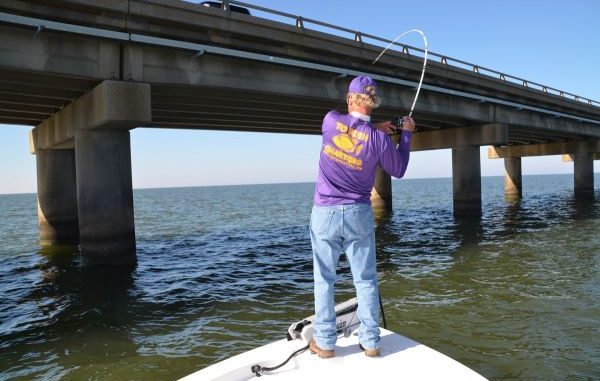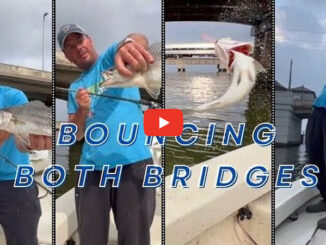
The Lake Pontchartrain Causeway consists of two spans of bridge, each 24 miles long. That’s a lot of bridge.
On the good side, that means fishing there is never really crowded. On the bad side, there’s a lot of ground to cover to find fish.
“The bite can be from all the way on the north shore to all the way on the south shore,” explained Greg Schlumbrecht. “But once it starts, it doesn’t move much — maybe a mile, at the most.”
But there is more to zeroing in on trout than finding where the bite is hottest. That can be done by simply looking for concentrations of boats.
Schlumbrecht, unlike some other fishing guides, is a big believer that color of soft plastics matters.
But color preferences change from year to year, said the experienced guide.
In 2014, the hot colors were shrimp cocktail and opening night. Both are light colors. Both are Deadly Dudley plastics, although he will use other brands.
More importantly, both have chartreuse tails.
“If the baits don’t have chartreuse tails, I dip them in Spike-It Dip-N-Glow Garlic lure dye,” Schlumbrecht said.
A well-used bottle of dye was lying on his boat’s console.
He sticks his paddle-tail grubs on 3/8-ounce unpainted jigheads.
Nailing down speckled trout on the big bridge demands more than finding where the bite is best on the two spans: Successful anglers have to determine where on each piling (often called “poles” by bridge regulars) the fish are holding.
“Divide the sides of a pole into four quadrants,” Schlumbrecht said. “Cast to each quadrant to determine where the fish are holding. Once you determine the pattern, concentrate on that quadrant.
“You can still catch fish in the other quadrants, but not as many. The pattern usually holds all day, but will change from day to day.”
Schlumbrecht fishes both spans of the bridge, but the spans were built years apart and designed differently. The poles are closer together on the southbound (western) span.
With another fisherman in the boat, he likes to fish that span, since two sets of poles are within casting distance at one time.


